Four Steps You Can Take to Improve Remote Employee Engagement
One of the bright sides of the past two years has been the long overdue reckoning that a lot of jobs can be done from everywhere. It led to widespread changes, including an exodus out of cities, a drop in demand for physical office spaces, and the rise of the Great Resignation. It’s also left companies scrambling to find the magic bullet to engage these remote employees and recreate the physical office.
Tools like Zoom, Slack, and Microsoft Teams have taken off. Happy hours, team building exercises, and lunches have all gone virtual. Some employees have thrived in this new setting, embracing a better work-life balance and the ability to eliminate the daily commute. A lot of employees, however, have struggled as they’ve lost valuable touchpoints with coworkers and management.
So how do you make the most of the remote employee experience and provide your more extroverted team members the same day-to-day virtual office they enjoyed in a physical setting? Well, to be rather frank about it, you can’t. The experience is simply not the same and never will be. But that doesn’t mean you need to throw in the towel. Here are some easy steps to take to help your existing team and future employees make the best of the new reality.
Be Honest About Remote Work
As an extrovert, I feel compelled to share my experience, even pre-pandemic, as I transitioned from 2-3 days in the office to maybe one day every two or three weeks. I feed off of the energy of people and I love a good attaboy after a completed task. As I drifted away, physically, from the everyday bustle of the office, I felt distant and disconnected. Worse yet, I took the lack of communication as negative feedback on my job performance and every new initiative I wasn’t included on as another sign of my impending firing.

When I finally addressed this with my boss, I understood that none of this was true. My work was indeed valued and appreciated–I had been in my own head. I interpreted the decrease in touchpoints, people energy, and spur of the moment feedback, all inevitable side effects of shifting to remote work, as a reflection of my worth to the company. In reality, the old adage “no news is good news” was actually true.
Why am I telling you this story? Because remote work is different. There is no way around that. Be honest with your team about what the shift means and what they should expect. Get out in front of potential issues and let them know that communication works both ways and they can also reach out if they’re struggling. And acknowledge the elephant in the room–everything they know about working is about to change. Some employees may start looking elsewhere, but better for them to leave (or in this case, return to an office) and be happy than to stay and be miserable.
Invest in Personality Assessments
Remote work isn’t for everyone. And remote work can be a struggle for many, especially my fellow extroverts. But some people thrive in this environment. And a lot of this depends on personality types. Knowing your team and, just as important if not more, knowing yourself are vital to understanding who needs what. If you have an employee like me, you may need to pick up the phone and check in for five minutes every week. If you have a website developer, it may be as simple as checking in on Slack to make sure they have everything they need to get their work done.
In my different roles in the culture realm, I’ve worked with DISC, Myers Briggs, and the Predictive Index. Each of these tools has its own strengths and weaknesses, but they all accomplish the same thing, an increased awareness of those around us and an appreciation of the different motivators and drivers. We tend to see the world through our own lenses and assume what makes us tick makes everyone tick. The key to managing a team, especially a remote one, starts with self awareness and an understanding of those we manage.
Back to my example. My CEO, to whom I directly reported, was a more introverted, “your recognition is your paycheck” type of boss. After we went through the Predictive Index, it became clear that our miscommunication was because he assumed I understood that about him and I assumed he, like me, also longed for recognition and praise. Until this exercise, we were communicating on two completely different planes.
Tweak Your Communication Style & Recreate Touchpoints
Long before the pandemic, I did a summer MBA internship with a sales consultancy. Specifically, I did market research on managing remote sales teams, interviewing over 300 remote salespeople and managers of remote sales teams. The most successful, goal-crushing salespeople heard from their managers at least once a week, on the phone, and were often met on the road at least once a quarter to attend sales calls, give reviews, and break bread.
Your remote IT/marketing/creative/whatever team is no different. And while it might not be possible to visit with, or fly everyone in, it is pretty simple for any manager to pick up the phone (or send a note on Slack) every once in a while. Armed with the personality assessments, draft a communication and touchpoint strategy that works for the individuals on that team. Executives should lead by example from the top down, checking in regularly with their direct reports. This makes employees feel valued and heard, and helps them understand the importance of checking in with their teams.
Host Regular Events

I grew up in Miami. When I tell people this, they immediately assume I spent my days in the sand and my nights eating dinner on South Beach. The opposite is true–we only visited the beach when friends or family were in town. But it was nice knowing the beach was there if we wanted it, only a short drive away. People plan and save for years to visit Miami, but we lived there, even if we rarely took advantage of all it had to offer.
Virtual events are similar. Like I mentioned before, we had a remote workforce long before the pandemic and had been hosting virtual happy hours, lunches, and more prior to them becoming household words. Both pre- and post-pandemic, one thing became obvious: not everyone participated. In fact, less than 10% of the company regularly attended these events. At one point, we switched from a monthly cadence to a quarterly one. Attendance stayed the same, but over 50% of our remote survey respondents requested more virtual events and opportunities to engage with their coworkers. When we switched back to monthly events (and even added themes like game night, scavenger hunts, and trivia), our attendance remained the same as it had been. Virtual events were the remote employees’ beach. They valued it, even if they never made the virtual drive to see it.
The Conclusion
Sorry, but there is no silver bullet to engage a remote workforce. In spite of the pages and pages of results when you Google Ecosia “Remote Employee Engagement”, (also, congratulations, you just planted a tree by clicking that link) there is no one size fits all solution and there definitely is no substitute for a physical office and 3D IRL human interaction.
But you can be honest with your team (and yourself) about the differences, the struggles, and the need to communicate more than ever. You can invest in a good personality assessment that helps you understand the differences in communication styles and motivators for you and your team. You can put together a strategic engagement plan for your executive team that trickles down to your managers and their teams. And you can give your remote employees a beach to play on, even if its primary value is knowing it’s there if they need it.
Nathan Stuck is the Founder and CEO of Profitable Purpose Consulting, which helps companies deepen their commitment to using business as a force for good using the B Impact Assessment to improve their impact. He also serves as the founder and chair of B Local Georgia and teaches an MBA course on B Corps at the University of Georgia in Athens, GA.
